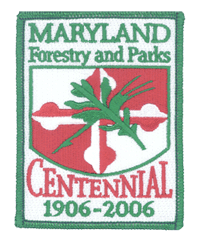 A 100-Year Comparison of Maryland’s Forest Products Industry
A 100-Year Comparison of Maryland’s Forest Products Industry
Daniel Rider, Associate Director, Forest Products & Utilization
Maryland Department of Natural Resources – Forest Service
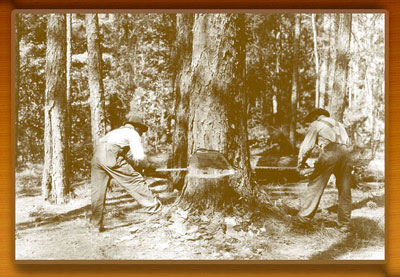 A full century of forestry in Maryland. By some measures,
this is a long time -- by some other measures, it’s hardly a wink in time. Since
folks involved with forest management are accustomed to thinking in terms of a
forest life-cycle, the thought of a hundred-year period can pass through the
mind’s eye with little notice…until you stop and think about what has occurred
in these particular past hundred years: we have moved from horses to
automobiles; cell phones replace the telegraph; schoolchildren use laptops and
satellite links instead of chalkboards; people have left footprints in moon
dust; and today horses are pets and oxen are curiosities. Thinking of these
changes makes you wonder about what advancements have occurred in Maryland’s
forest industry.
A full century of forestry in Maryland. By some measures,
this is a long time -- by some other measures, it’s hardly a wink in time. Since
folks involved with forest management are accustomed to thinking in terms of a
forest life-cycle, the thought of a hundred-year period can pass through the
mind’s eye with little notice…until you stop and think about what has occurred
in these particular past hundred years: we have moved from horses to
automobiles; cell phones replace the telegraph; schoolchildren use laptops and
satellite links instead of chalkboards; people have left footprints in moon
dust; and today horses are pets and oxen are curiosities. Thinking of these
changes makes you wonder about what advancements have occurred in Maryland’s
forest industry.
Reflecting on our forest history holds more value than just
an interesting reminiscence of days gone by – understanding our past reveals to
us how market and social forces shaped our forests of today and hints at what we
should possibly expect from the future. Examining our forest history also
affords us a “benchmark” from which we can compare our gains and advancements
(or losses) during a hundred-year effort of utilization, management, and
improvement.
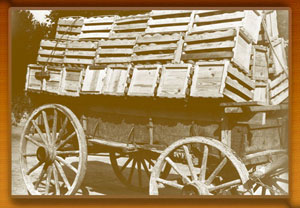 Not surprisingly, many dramatic changes occurred in forest
utilization during the last century. What is surprising, however, is what has
remained the same. A quick examination of these changes and constants should
prove enlightening.
Not surprisingly, many dramatic changes occurred in forest
utilization during the last century. What is surprising, however, is what has
remained the same. A quick examination of these changes and constants should
prove enlightening.
Maryland wood-based manufacturers used over 345 million board feet of wood in
1916 (which does not include lumber, piling, ties, etc.), with a mere 17%
of this wood volume produced from Maryland’s forests. Manufacturers used 54
species of wood, drawing from 34 states and 13 foreign countries. Nearly
half (49%) of all wood consumed in Maryland was used by the box and crate
industry. Planing mills, silo manufacturers and cooperages, ship building,
railcar manufacture, furniture, caskets, luggage, baskets, toys, musical
instruments and cigar box industries rounded out the bulk of the industry.
Baltimore was by far and away the leading center of wood manufacturing with 164
plants employing over 8,000 persons. The other focal points for wood industry
included Hagerstown (due to the exceptional railroad infrastructure) and
Salisbury (having the advantage of combined access to rail and water
transportation and proximity to great stands of timber). In short, Maryland at
the time was known as an “industrial” State and forest products manufacture led
the way. Wood manufacture was immensely important to the welfare of Maryland,
which is why the public greatly supported programs aiming to increase the
productivity of forestlands.
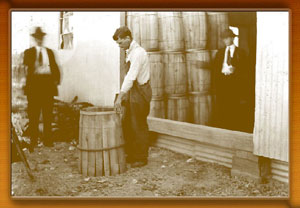 It’s not too surprising to learn that in 1914 the 2.2
million acres of Maryland’s forest supported 3.8 billion board feet of timber,
which in turn fed a highly respected and valued industry of 800 sawmills, and
300+ wood-based manufacturers and ancillary businesses. Significant even by
today’s standards, 16,790 people relied on forest products for their wage,
making it the second-largest single industry in the State. Loggers produced 229
million board feet of logs, with hardwoods comprising 129 million board feet and
pine accounting for the other 100 million board feet. Lumber products only
accounted for 40% of the annual timber harvest, with the majority of the harvest
(60%) processed into pulpwood, railroad ties, piling, cordwood (i.e., fuel
wood), tanbark, staves, shingles, lath, and charcoal.
It’s not too surprising to learn that in 1914 the 2.2
million acres of Maryland’s forest supported 3.8 billion board feet of timber,
which in turn fed a highly respected and valued industry of 800 sawmills, and
300+ wood-based manufacturers and ancillary businesses. Significant even by
today’s standards, 16,790 people relied on forest products for their wage,
making it the second-largest single industry in the State. Loggers produced 229
million board feet of logs, with hardwoods comprising 129 million board feet and
pine accounting for the other 100 million board feet. Lumber products only
accounted for 40% of the annual timber harvest, with the majority of the harvest
(60%) processed into pulpwood, railroad ties, piling, cordwood (i.e., fuel
wood), tanbark, staves, shingles, lath, and charcoal.
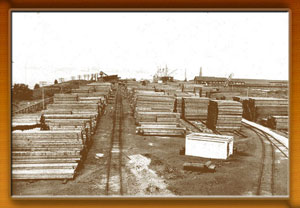 In total, Maryland’s primary forest industry harvested over
49 million cubic feet of wood each year. The trouble was that this harvest
amounted to a very large over-cut of the growing stock: with less than 10% of
the forests suitably stocked with sawtimber and annual growth only providing 70%
of the harvest, it was obvious that our forests were being depleted rapidly. In
characteristic fashion, Maryland’s first State Forester Mr. Fred Besley reacted
to this dilemma with optimism and purpose -- rather than condemn the industry
for over-consumption, he rightfully observed that the industry was much too
important to allow its diminishment, and thus the solution was simply to grow
more wood in our existing forests. In fact, he confidently stated that “there is
little doubt that in a comparatively few years time the production of Maryland’s
forests might be raised 100 percent”.
In total, Maryland’s primary forest industry harvested over
49 million cubic feet of wood each year. The trouble was that this harvest
amounted to a very large over-cut of the growing stock: with less than 10% of
the forests suitably stocked with sawtimber and annual growth only providing 70%
of the harvest, it was obvious that our forests were being depleted rapidly. In
characteristic fashion, Maryland’s first State Forester Mr. Fred Besley reacted
to this dilemma with optimism and purpose -- rather than condemn the industry
for over-consumption, he rightfully observed that the industry was much too
important to allow its diminishment, and thus the solution was simply to grow
more wood in our existing forests. In fact, he confidently stated that “there is
little doubt that in a comparatively few years time the production of Maryland’s
forests might be raised 100 percent”.
 Today, we can see the results of these efforts. Roughly equal acreage of
forest (2.5 million acres) harbors over 16 billion board feet of timber (a
four-fold increase). The rate of growth annually has almost tripled during the
last century. Harvested volumes remain relatively constant at approximately 200
million board feet yearly, and yet annual growth exceeds removals by at least
25%.
Today, we can see the results of these efforts. Roughly equal acreage of
forest (2.5 million acres) harbors over 16 billion board feet of timber (a
four-fold increase). The rate of growth annually has almost tripled during the
last century. Harvested volumes remain relatively constant at approximately 200
million board feet yearly, and yet annual growth exceeds removals by at least
25%.
Manufacturing still remains a vital component to Maryland’s welfare, with our
wood industries major players in the manufacturing sector. State-wide, wood
industries employ in excess of 14,000 persons in 928 plants, which is 9% of all
manufacturing jobs. Secondary wood manufacturing today is still centered chiefly
in the Baltimore region with Allegany and Caroline Counties now the runner-ups.
Maryland is more self-sufficient in meeting its wood needs, with approximately
62% of its wood supply furnished from local forests. Clearly, the forest
industry has demonstrated its resiliency and adaptability. Thanks to this
industry, thousands of Marylander’s are provided livelihoods, consumers enjoy a
higher standard of living, and our environment is protected and enhanced.
Acknowledgements:
Historical data collected from the following sources:
Besley, F.W. 1916. The forests of Maryland. Baltimore: Maryland State
Board of Forestry. 12 p.
Besley, F.W., and J.G. Dorrance. 1919. The wood-using industries of
Maryland. Baltimore: Maryland State Board of Forestry. 122 p.
Contemporary data collected from the following sources:
Frieswyk, Thomas S. 2001. Forest Statistics for Maryland: 1986 and 1999.
Resour. Bull. NE-154. Newtown Square, PA: US Department of Agriculture, Forest
Service, Northeastern Research Station. 164 p.
Irland, Lloyd C., A. Goetzl and R. Wieland. 2004. Forest Production,
Industry and Forest Retention Assessment. MCAE Pub-2004-01. Queenstown, MD:
Maryland Center for Agro-Ecology, Inc. 221 p.
Author:
Daniel R. Rider, Associate
Director
Forest Products Utilization & Marketing
Maryland Department of Natural Resources – Forest Service
Written December 2005.
Photographs (top to
bottom):
Felling a tree with Bow Saw, 1920's
Cart with crates
Making Barrels, Cambridge, 1922, Photo by Fred W. Besley
Weyerhaeuser Lumber Co. at Curtis Bay, vessel unloading and storage yards, Photo by Fred W. Besley, 1926
Worker with Loblolly pulpwood peeled, 1930s